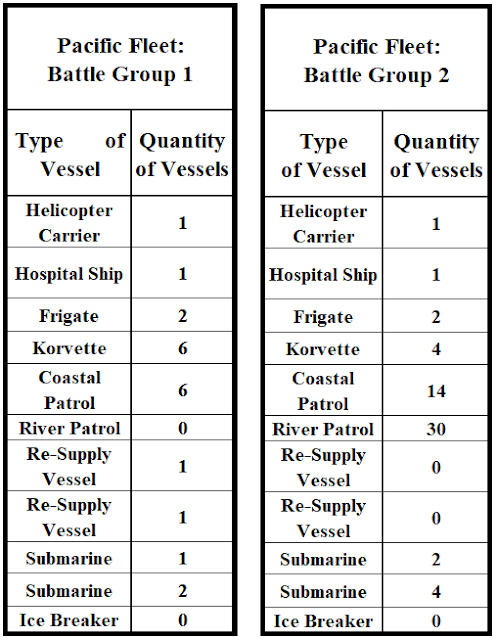 |
| L'Anse aux Meadows, Nfld (Photo by V.A. McMillan 17 Jul 2012) |
A short while ago, I
started this discussion with adjusting the Canadian Forces High Command from a
Political Patronage Model to the Canada First Model. (You can find that post
here: https://mtnmanblog.blogspot.com/2021/04/future-cf-structure-from-partisan.html). Further, all new Canadian submarines should employ the tethered drone antenna system I suggested previously (https://mtnmanblog.blogspot.com/2021/04/design-idea-tethered-drone-antenna-for.html).
Moving forward, with the
Canada First Model for long-term strategic planning for the defence of Canada
that is immune to petty political interference and intrigues. The first big
leap has to be based on planning that looks at the service life of each piece
of equipment necessary for the defence of Canada and then ensuring there will
always be a ready supply to replace units that are reaching the end of their
service life. This can also be a thread to explore later, of the process to
have frontline equipment, second line equipment and third line equipment,
before retiring said equipment from service.
The exploration of a
Canada First Model for National Defence will begin with a look at our Naval
assets. I will skip a review of our current assets, that information is
available somewhere on the world wide web. I will focus on developing a list of
naval assets that should be produced by Canadian manufacturers in direct
support of the Canadian Forces.
If the current economic
situation requires the government of the day to spend trillions of dollars of
borrowed money, by God, there better be something to show for that debt at the
end of this nightmare other than the total enslavement of the Canadian people. One
possible solution is to borrow to invest in defending Canada and by extension
re-building Canadian industry from coast-to-coast-to-coast!
Even one trillion dollars
focused towards rebuilding the Canadian Navy would go an awfully long way to
putting Canadians back to work, strengthening the defence of the Canadian
coastline, which is the longest in the world – according to online sources; and
revitalizing Canadian shipbuilding yards on the Pacific coast, Atlantic Coast
and on the shores of the Great lakes. With this in mind, ships should be scaled
to make the most of our local builders.
Unlike the political patronage model, where only one or two shipyards are building ships and the rest are starving for work and contracts, the whole point of a Canada First Model, would be to ensure the widest possible spread of sustainable manufacturing across the country. Those in other manufacturing industries fear not, future blog posts will explore land-based equipment and armaments, as well as air assets. The Canada First Model will be a systems approach to ensure harmony of production towards a common goal - defence of Canada, through Canadian innovation, industry, and employment.
Let’s look at some
details…
The proposed naval fleet
composition will be based on a Helicopter Carrier and Hospital Ship group. For
defence of Canada, aid to civil powers in the event of a major disaster, and/or
aiding our NATO or NORAD allies this combination of naval and air assets would
make Canada a better ally than current contribution which are strangled by
political interference.
Looking at each fleet,
starting with the Pacific Fleet:
Battle Group 1: will be
Canada’s contribution to blue water patrolling of Canadian territorial waters
and be the assets for foreign deployments around the Pacific to aid our allies.
Battle Group 2: will be primarily
for the defence of Canada’s Pacific coastline; as well as, training Naval
Primary Reserve Units.
Next, is the Atlantic
Fleet:
Battle Group 1: will be
Canada’s contribution to aiding our NATO partners and blue water patrolling of
Canadian territorial waters.
Battle Group 2: will
primarily focus on coastline patrol and training Naval Primary Reserve Units.
The Arctic Fleet:
The Arctic Fleet will
have two missions. The primary mission is to conduct surveillance of the North-West
Passage and sub-surface surveillance of Canadian territorial waters. The
secondary mission is to ensure connectivity between Northern Communities in the
Yukon, Northwest Territories, and Nunavut.
Finally, the Great Lakes
Fleet:
The Great Lakes Fleet
would be broken down to Patrol Groups on Lakes Superior, Huron, Eire, and
Ontario. This would increase Canadian presence on these bodies of water to
ensure sovereignty and border integrity via water routes to land access points.
Further, the addition of a Hospital Ship on Lake Ontario would be a giant step
forward for emergency preparedness in the event of a disaster in the Greater
Toronto Area.
Parting shot…in closing
this post, I would like to briefly touch on adding a few strategic naval bases
to support this expanded Canadian Navy.
The Pacific Coast would
maintain its current bases at Esquimalt and Nanoose Bay. A new facility would
be needed at Port Rupert or somewhere nearby. Further, a series of coastal
outposts would be a smart move to allow the Coastal Patrol vessels and River
Patrol boats a place to make contact with locals, re-supply/refuel, and gather
intel.
The Atlantic Fleet would improve
current facilities at Halifax and St. John’s. Like in the Pacific, a series of
coastal outposts would be the right approach to networking with the locals and
improving communication exchanges. A submarine harbour near Goose Bay would be
something to consider.
The Arctic Fleet would
need new facilities at Tuktoyaktuk, Iqaluit, near Sanikiluaq, and near Akimiski
Island. Further, protecting in the inner North-West Passage by establishing surveillance
beds for Stalker Class submarines would be a good idea. Finally, having the
Polar 8 Ice Breakers in the region would aid rescue missions for ships or
aircraft stranded in or on the ice.
This has become a bit
long for a blog post, so I will end it there for today.
So, until next time…write
your plans down and share them!
Mountainman.
































